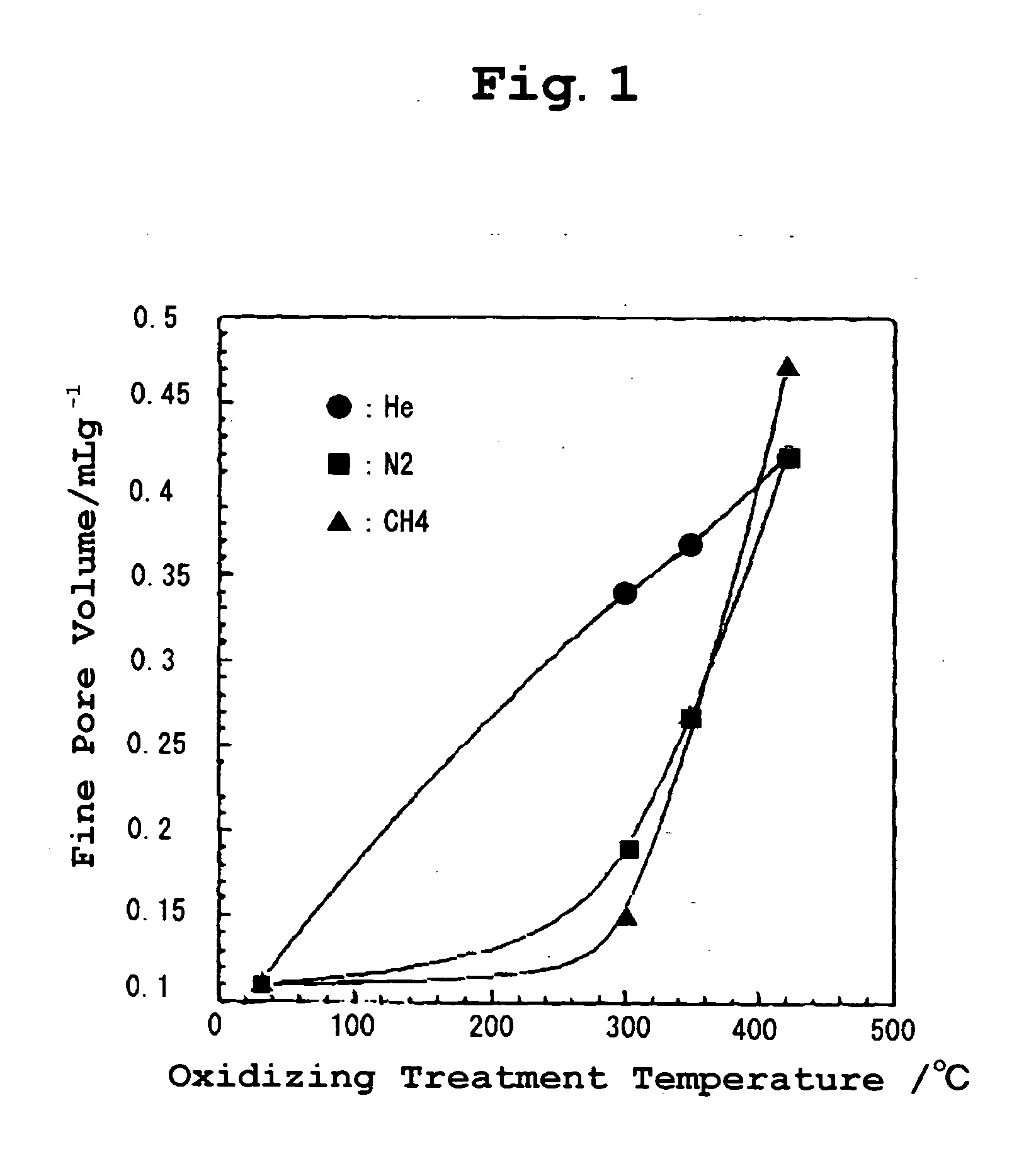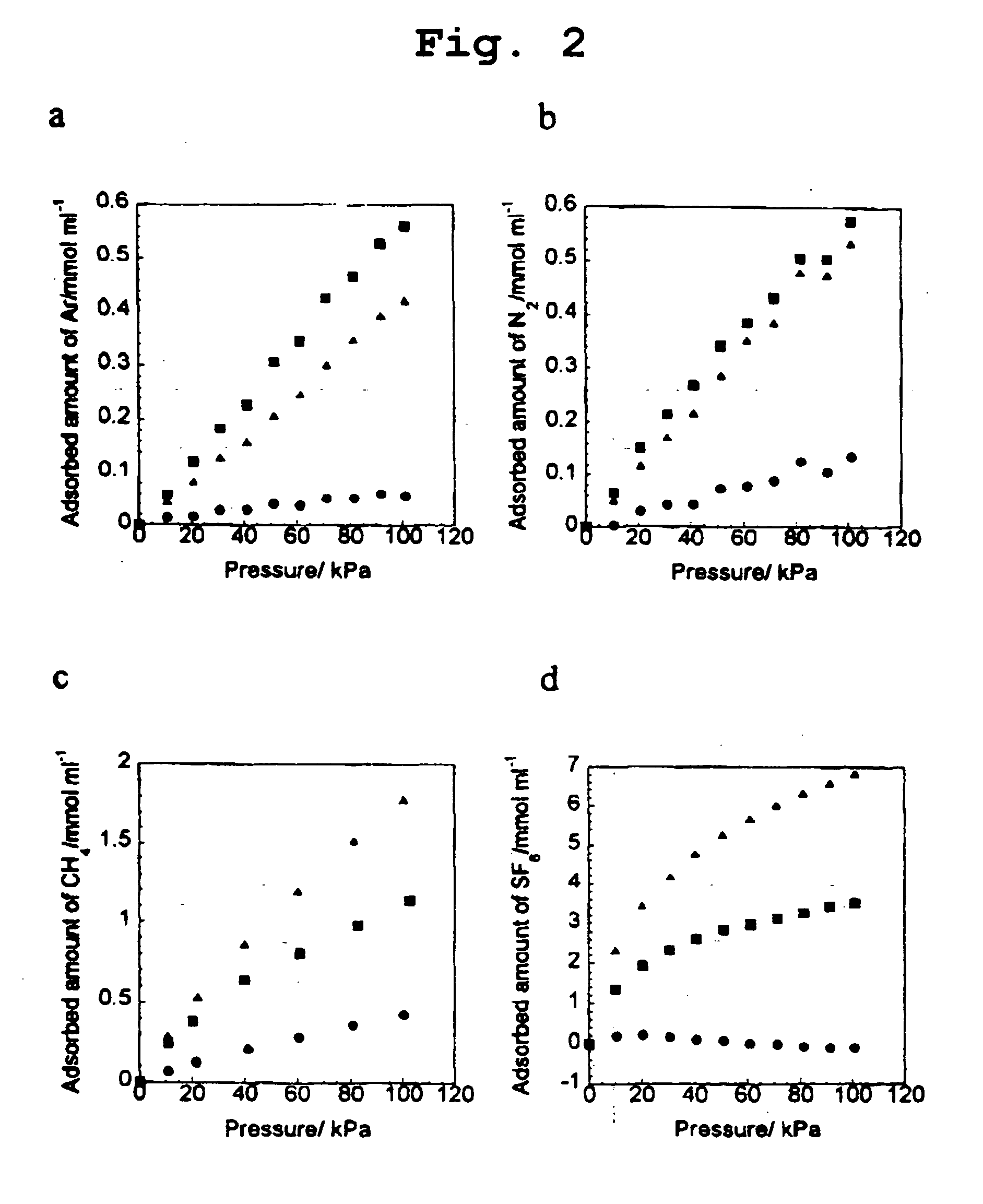Carbon nanohorn adsorbent and process for producing the same
a carbon nanohorn and horn technology, applied in the field of carbon nanohorn adsorbent and process for producing the same, can solve the problems of difficult control of fine pore distribution in molecular size level, inferior chemical stability of zeolites,
- Summary
- Abstract
- Description
- Claims
- Application Information
AI Technical Summary
Benefits of technology
Problems solved by technology
Method used
Image
Examples
example 1
[0024] CO.sub.2 laser beam of 10.6 .mu.m wavelength with a beam diameter of 10 mm was radiated to a .phi.30.times.50 mm graphite target rotated in a reaction chamber at a room temperature and 760 Torr in Ar atmosphere and carbon nanohorns as products were recovered from a collection filter. The obtained carbon nanohorns were in form of a single-wall carbon nanohorn aggregate having a spherical shape with about 70 nm diameter and formed in a manner that the tubular parts of a plurality of carbon nanotubes were gathered in the center side and the conical parts were projected out the surface just like horns. Each carbon nanohorn had a tubular part with a diameter of about 2 to 3 nm and a length of about 30 nm.
[0025] The carbon nanohorns were subjected to oxidizing treatment for ten minutes at three different treatment temperatures; 300.degree. C., 350.degree. C., and 420.degree. C., and in oxygen pressure 760 Torr. Untreated carbon nanohorn was denoted as NH0, and carbon nanohorns afte...
example 2
[0029] Using molecules with various diameters, the molecular sieve effect of NH0, NH300, NH350, and NH420 same as those of Example 1 was investigated.
[0030] As non-adsorptive substance molecules, He, Ar, N.sub.2, CH.sub.4, SF.sub.6, and C.sub.60, were selected since they have substantially spherical molecular shape and are only affected by London dispersion force among molecules, that is, molecules free from priority intermolecular interaction. The diameters of them are shown in the following Table 3.
[0031] Among these molecules, He, Ar, N.sub.2, CH.sub.4, and SF.sub.6 were subjected to an adsorption isotherm test and the results are shown in FIG. 1 and FIG. 2.
[0032] FIG. 1 is a graph illustrating the fine pore volumes calculated from the adsorption quantities of He, N.sub.2, and CH.sub.4 and NH0 which was not subjected to oxidizing treatment scarcely adsorbed molecules. For example, NH300 showed a large adsorption quantity for He but a small adsorption quantity for N.sub.2, and a f...
PUM
| Property | Measurement | Unit |
|---|---|---|
| pore diameter | aaaaa | aaaaa |
| pore diameter | aaaaa | aaaaa |
| pore diameter | aaaaa | aaaaa |
Abstract
Description
Claims
Application Information
 Login to View More
Login to View More - R&D
- Intellectual Property
- Life Sciences
- Materials
- Tech Scout
- Unparalleled Data Quality
- Higher Quality Content
- 60% Fewer Hallucinations
Browse by: Latest US Patents, China's latest patents, Technical Efficacy Thesaurus, Application Domain, Technology Topic, Popular Technical Reports.
© 2025 PatSnap. All rights reserved.Legal|Privacy policy|Modern Slavery Act Transparency Statement|Sitemap|About US| Contact US: help@patsnap.com



